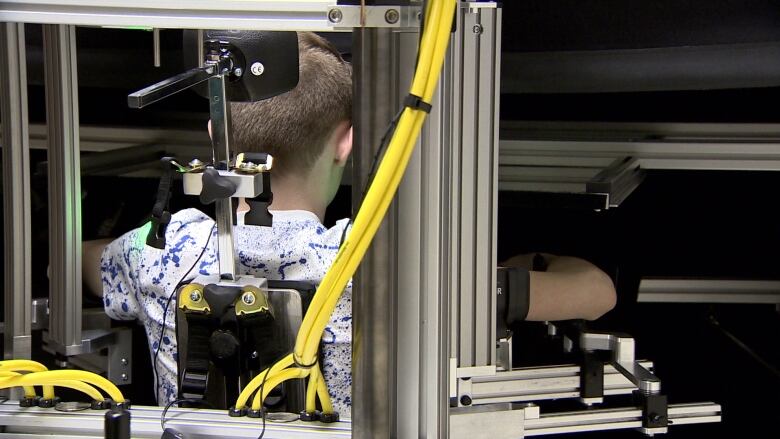Robotic exoskeleton maps sense-deficits in young stroke patients
Pioneering study could pave way for better therapies for cerebral palsy, researchers say

Researchers at the University of Calgary are using robotics technology to try to come up with more effective treatments for children who have had strokes.
The robotic device measures a patient's position sense what doctors call proprioception the unconscious perception of where the body is while in motion or at rest.

"Someone whose position sense has been affected might have difficulty knowing where their hand or arm is in space, adding to their difficulty in using their affected, weaker limb," said one of the study's senior researchers, Dr.Kirton of the CummingSchool of Medicine's departments of pediatrics and clinical neurosciences.
"We can try to make a hand stronger but, if your braindoesn'tknow where the hand is, this may not translate into meaningful function in daily life."
PhD candidate Andrea Kuczynski is doing ongoing research using theKINARM(Kinesiological Instrument for Normal and Altered Reaching Movements)roboticdevice.
During the test the children sit in theKINARM machinewith their arms supported by its exoskeleton, which measured movement as they played video games and did other tasks.All the children also had MRIs, which gave researchers a detailed picture of their brain structures.
KINARMcould berehabilitation tool
"So basically they slide me in there, position my arm, so it like maps out, so they can see it on the screen, and like how I move," said Max Challoner, a 12-year-old participant in the study.
He had a stroke shortly after he was born that left him with mild physical impairments on his right side.
Years later, testing showed that Max might have a sensory processing disorder.
But the KINARM testing has shown Max's right side moves nearly as well as his left. That's a relief for his mother, Wendy Saunders.
"That's something that we don't need to worry about," she said. "Just knowing that takes away a lot of the other anxieties we have about his future."
Max says he was just happy to take part in the study."It feels nice actually, helping people in such a way that it could potentially help them learn how they function," he said.
Kuczynski tested 40 children who had perinatal strokes and compared the results to a healthy control group.
Perinatal stroke affects about 1,000 children in Alberta.The perinatal period lasts from the 20th week of gestation to shortly after birth.
Different types of perinatal strokes cause different brain injuries. Cerebral palsy is a common secondary outcome that affects muscle movement and motor skills.
"In the future, theKINARMcould be used as a tool for rehabilitation. Once we have an understanding of how an individual's position sense has been affected, we can begin to focus and personalize rehabilitation," Kuczynski said.
The study was published in a recent edition ofNeurorehabilitationand Neural Repair.












_(720p).jpg)


 OFFICIAL HD MUSIC VIDEO.jpg)
.jpg)



























































































